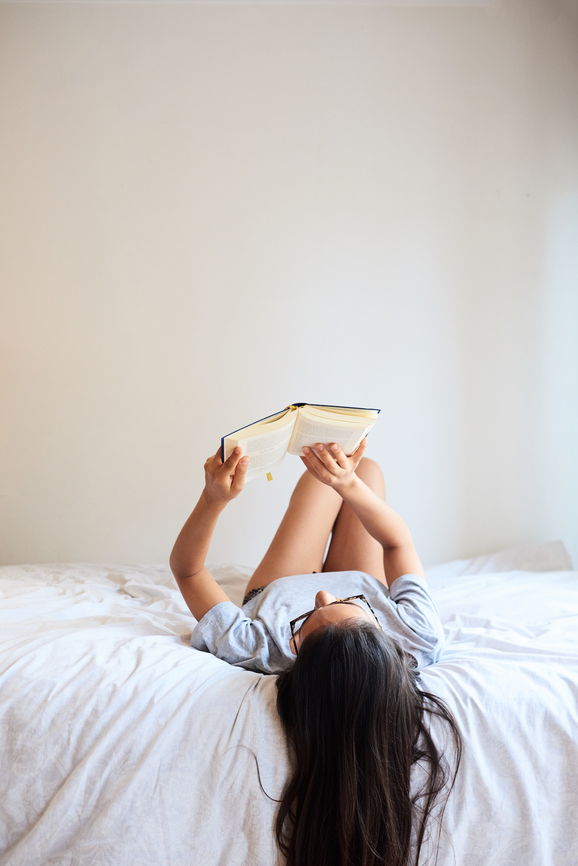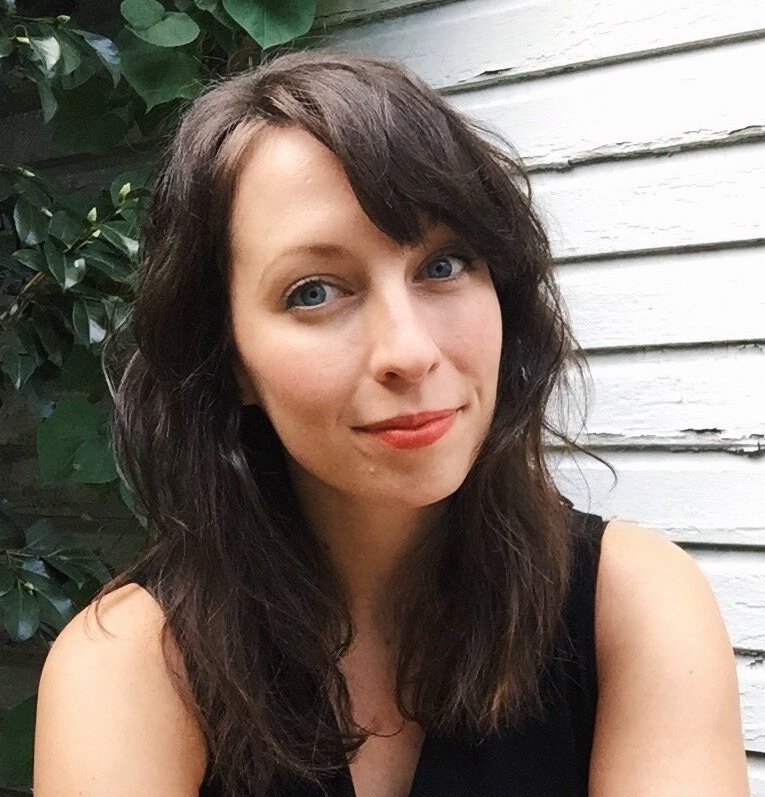
How To Get Started Reading Romance Novels
When I wrote about my experience with pleasure and reading romance novels, I got so many DMs and comments asking the same two questions: “Where do I start?,” and “What do you recommend?”
While it seems like a straightforward list of Best Of titles and favorite authors might suffice, I always feel I need more information about the person before I can make any recommendations. More than with any other genre, personal taste matters in finding your corner of the romance world. What I love might not land for you, and with the annoying persistence of anti-romance bias out there, I feel a lot of pressure to try to show you the best possible time. The good news? There is, quite literally, something for everyone in romance. In the words of romance blogger Sarah Wendell, “Whatever your cup of tea is, someone’s pouring it.”
“More than with any other genre, personal taste matters in finding your corner of the romance world.”
One of the best things about the romance novel industry is also what makes it extremely intimidating: The genre is vast, with so many subgenres and tropes that hitting up that section of the bookstore can sometimes feel like visiting a foreign country without any language prep. So let me be your guide. ✨
Below is my personal starter kit including everything I know and love about romance books. And if you’re romance-curious but still hesitating on the corner of “What will people think of me if I read romance?” and “I probably should read this other Serious Book instead…”, allow this to be your friendly reminder: Your pleasure and joy is something you can just have, without any excuses, explanations, or hesitations. You’re allowed to read something fun, sexy, or silly. That has no bearing on how intelligent or serious you are. And guess what? Tons of romance books are well-written, smart, and transformative.
Ready to find out what you like in a romance novel? Let’s dive in. ❤️
What is a romance novel? Or, The Contract
What makes the genre of romance distinct from literary romance? In short: The Contract. According to the Romance Writers of America (RWA), two components must exist for it to be considered a romance:
- There is a central love story between two characters
- There is a happy ending
All the lovers in romance, no matter how crossed their stars may be, end up Happily Ever After (HEA) (or at the very least, Happily For Now). This is possibly why there has been such a boom in the romance industry since the pandemic — life is stressful and unpredictable, but genre fiction is emotionally satisfying and committed. Literary fiction may ask you to submit your emotions to the author, but with romance, you’ll always get an emotionally satisfying and uplifting ending. Like any other comfort food, song, sweater, or beverage, this can help you recharge and face another day of life’s uncertainties.
What is a sub-genre?
Underneath the umbrella of the romance genre are several established sub-genres, which I sort of think of as flavors. Did you love Bridgerton? Historical romance is probably your jam. Shamelessly hitting the Hallmark channel every December (er… late October)? The holiday romance aisle is thataway. Love a hero with wings or a magical threat to raise the stakes? Fantasy romance at your service. And there are even deeper and more specific subs-within-subs, like hockey romance, for example. If there’s a season, a landscape, or a period you want to spend time in, there’s a whole catalog of books out there for you.
For the sake of brevity, I’m going to index an abbreviated list of subs (and some sub-subs) below to give a clear view of crossovers. Any quick internet search will show you many more sub-subs (and even sub-sub-subs) that have their own markets and could arguably be a single sub. It’s a lot. Best to just get into it:
Historical Romance
Arguably the bread and butter of the industry (you may have heard the term “bodice ripper”), historical romance is roughly anything taking place pre-1950. It includes other popular subs like the Viking Age, 17th Century Scottish Highlands, and World War II. I’d put some Cowboy Romance here, but only if it’s from the American Westward Expansion (lots of Contemporary Cowboys out there for your readin’ pleasure, ma’am!).
Regency Romance, or anything taking place between 1811–1820 in England’s Regency Era, is an extremely popular sub that has a bit of a twist: While these books adhere to The Contract, they also focus significantly on the historical accuracy and artful depiction of the language, culture, and society. Hetero- or homosexual couples can be found in all of these genres. Sex of all levels of spice can be found in these books, though in my experience they almost always have up to three sexual encounters per book.
Contemporary Romance
These books are usually set in the current day, but can technically be set anytime after the 1970s. They feature modern-day situations and themes, and include any number of subgenres like sports romance, workplace romance, paranormal romance, and romantic comedies. LGBTQ subs abound in contemporary fiction, as do polyamorous subs, and something called “reverse harem,” aka one woman and multiple men. YA Romance is often contemporary. Most of these books have sex in them, but there’s a very wide spectrum of spice levels (more on that below!).
Inspirational Romance
From a marketing standpoint, this is usually under the umbrella of Christian Fiction, though it can include non-religious and more spiritual plotlines. Amish romance is also quite popular. Many of these books do not contain sex, or are “closed door” (this means the readers are told it happens but won’t read a play-by-play), or only have sex under certain circumstances (between married couples, for example). The characters in these books are often looking for partners who share their the same religious, philosophical, or moral values.
What I’m Going to Rudely Lump Together and Call “Not-Real-Life-Rules Romance“
Fantasy, Sci-Fi, Paranormal, Post-Apocalyptic, Time Travel… I’m sorry, I know these are all technically their own specific subs, but we have lots of ground to cover and not unlimited time. These can cross over into contemporary elements (a modern-day vampire slayer falling in love with one of her targets…) or historical (a medieval prince falls in love with a fae queen…). There are usually very interesting plots and world-building elements, but the rules are the same: two characters whose love story is the central force, and they end up together at the end.
Erotic Romance
This is not a trick! While many romances contain sex, it is not a rule. In Erotic Romance, however, it is. And it’s not just gratuitous. The number one element of this sub is that the intimacy is key to the characters’ growth and development. So if it was taken out, there would be no story left. This sub can crossover with (almost) all of the above.
What is a trope?
A trope is a plot device or theme that gives a recognizable starting point for the book. In romance, it is often used as a kind of shorthand for the specific tension or dynamic a reader is looking for. Here are some common romance tropes:
- Friends to lovers: The couple starts off as best friends but has some kind of misunderstanding or mental block that means they aren’t together, even though everyone already thinks they are.
- Enemies to lovers: Here, powerful dislike hides an even more potent attraction.
- Fake dating: Two characters have to work together pretending to be a couple for some reason crucial to the plot. This often includes the “only one bed” trope, which is when they have to spend the night somewhere and *gasp* there is only one very comfy, romantic bed available.
- Forced proximity: When circumstances force the couple to be around each other constantly. This often includes workplace romances or neighbors to lovers.
- Opposites attract: Exactly what it sounds like, but includes my personal favorite, “Grumpy Sunshine,” where one character is a grouch and the other is a bubbly delight.
- Marriage of convenience: Often in the historical genre, the two characters are forced to get married and slowly fall in love. Often overlaps with: Fake dating, Forced proximity, and Grumpy Sunshine.
- Forbidden lovers: This one is pretty straightforward. The couple cannot be together, whether because of a family, cultural, or societal mandate, or even because of a rule the couple has set up for themselves (The actress who never dates fans…). Boss romances and other taboos like Best Friend’s Brother or Teacher-Student fall into this category.
- Royal romance: When one or more of the main characters is a member of a royal family. I would argue that Celebrity romances fit here too (these often have a bodyguard as the love interest!).
- Slow-burn romance: This can happen in any of the above, and is essentially when it takes almost the entire book for the couple to get together. There are lots of near-kisses and burning looks throughout, so the payoff is usually well worth the wait.
Every character gets a book
If you have a hard time leaving a fictional world after the book has ended, you will love the following fact about romance novels: Tons of them are series! (This list has 950 books.) If your small-town heroine owns a coffee shop, and she’s pining after the local high school football coach, and that coach has a best friend who is an assistant coach, and the assistant coach gets more than a paragraph mention, you better believe Mr. Assistant is getting his own HEA (likely with a single soccer mom he keeps butting heads with).
The best part about romance series is that they can be read as stand alones, in sequential order, or randomly. You can skip the first one and read the third and sixth. You can read the last one only. It’s fine! You already know that the two stars of each book are going to end up together, and it no more spoils the book to see them first as a couple than it does to watch a trailer for a movie. Since so much of the power of a romance novel is not the surprise of plot, it’s actually experiencing the interiority of desire and all of its ebbs and flows in real time. You’d be surprised how little “surprise” you truly need to feel big feelings as you watch each love story unfold.
A note on spice
Not all romance has sex in it. Some books might not even have a kiss, and others will go boldly where the reader may personally have never imagined was possible. (I’m imagining a paranormal-cowboy-time-travel sex scene that I haven’t personally encountered but feel fairly positive exists). There are six general spiciness levels, that speak to how explicitly sexual a book could be.
Here’s my very scientific labeling guide:
- No Spice: Sometimes this is called “wholesome,” “clean,” or “vanilla,” but I don’t love any of these terms. This level means there is nothing beyond very chaste hugs, hand-holding, and maybe a closed-lip kiss. If the couple gets married, they might have sex but the reader is not allowed in the room. No spicy language, and the longing expressed by the characters will be emotional and rooted in attachment.
- 🌶️: Some sexual activity, but not on the page or explicitly named. This is common in YA. The writing focuses on descriptions of the characters’ bodies in terms of their physical attraction to one another, and there’s lots of kissing. Desire might be expressed by the characters or narrator, but it will be fairly vague if not, at times, urgent.
- 🌶️🌶️: A lot of kissing and the characters are starting to talk about sex. Some clothes are coming off and an orgasm may be achieved. Desires might start to get more specific, both in sexual nature and the emotional implications of each interaction.
- 🌶️🌶️🌶️: Okay, sex is happening and the reader is in the room. But the language is euphemistic and the actions are still mostly implied. We might call this one “making love,” sometimes.
- 🌶️🌶️🌶️🌶️: Sex is happening! Not only is the narrator being very explicit about which body parts are being used and how, the characters are using their choice language. Dirty talk is often in play. The sexual acts themselves are not especially surprising, but the way they talk about them might be. There is urgency, desire, and lots of nudity. Love confessions could occur at any point in the action.
- 🌶️🌶️🌶️🌶️🌶️: Erotica-levels of spice are when the acts themselves start to get more daring; kinks and fetishes are introduced; and the reader is not only invited into the room but handed a transcript and a magnifying glass. There is no aspect of this scene that the reader is not invited to witness very, very closely. The character development is happening through the sexual acts, so it’s pretty essential that nothing is glossed over. If you listen to audiobooks and you are in public, expect to blush.
A very important note re: consent. Anything published before 2005 can sometimes include scenes that are not quite up to our current day’s standards of sexual consent and autonomy. Proceed with caution!
The romance community is large and passionate. You can find tons of resources to orient yourself in this vast and endless reading world, including more guides for getting started, more details on the industry and terms, a million think pieces about why the romance market is skyrocketing while the rest of the publishing industry is struggling, and lots and LOTS of recommendation lists for books in each sub genre.
While the romance industry is not without its faults and scandals, it remains a hugely diverse and subversive space that allows for thoughtful representation of all kinds of love and people. I love how readers of romance are so generous and enthusiastic, eager to share their books and stories with everyone. It’s a privilege and a pleasure to be part of it all.
With that in mind, we’d love to hear from you! What romance books do you recommend? How has reading romance helped bring you joy in your life? Let us know in the comments!
And happy, joyful, judgment-free reading to you all.
Stephanie H. Fallon is a writer originally from Houston, Texas. She has an MFA from the Jackson Center of Creative Writing at Hollins University. She lives with her family in the Blue Ridge Mountains of Virginia, where she writes about motherhood, artmaking, and work culture. You can find her on Instagram or learn more on her website.




